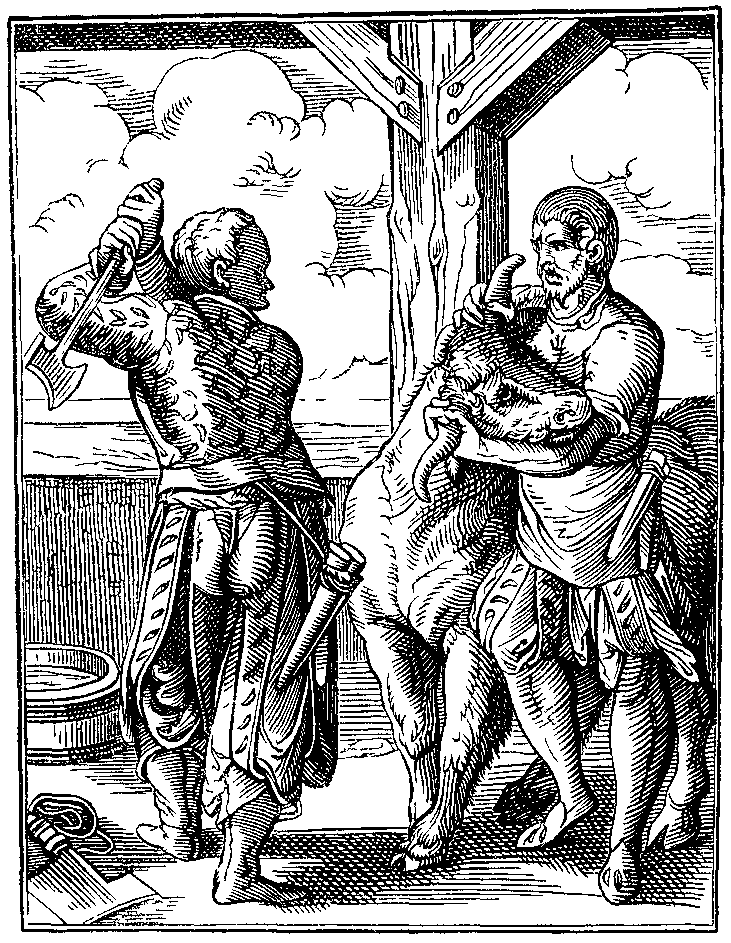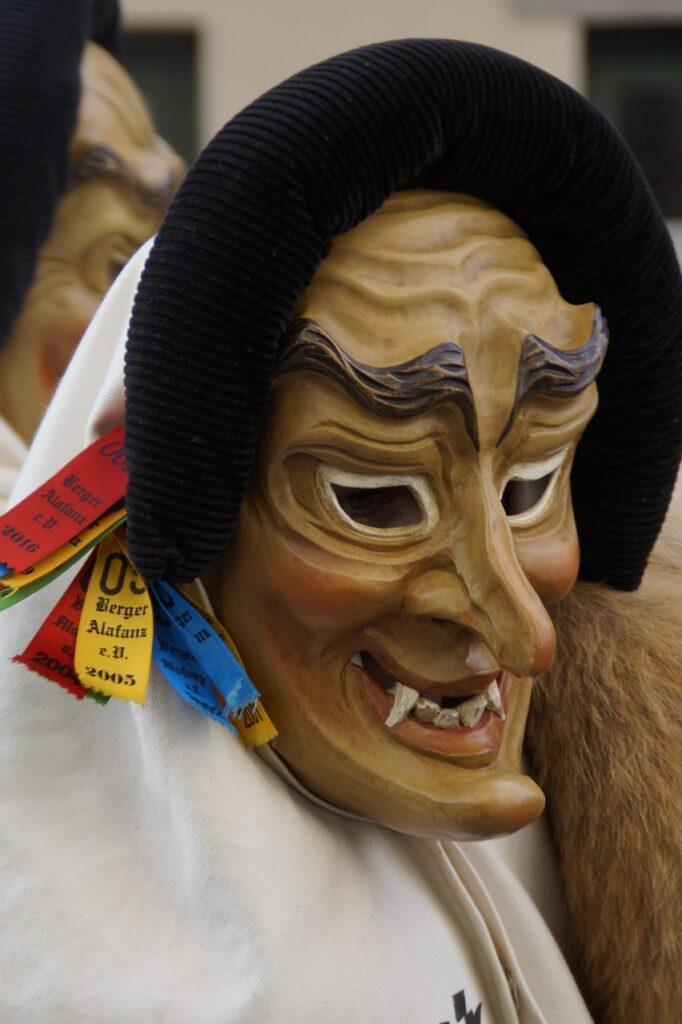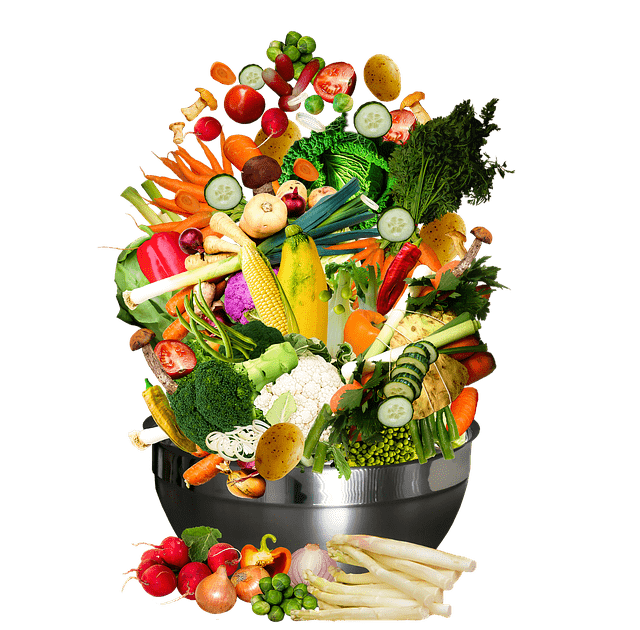 Vegetarianism, referred to in Sanskrit as ‘shakahara’, has been a foundational aspect of health and environmental ethics deeply rooted in ancient Indian traditions for millennia. Throughout its history, India has predominantly upheld a vegetarian lifestyle, with the United Nations’ Food and Agriculture Organization ranking it as the world’s lowest meat consumer in 2007. Despite enduring numerous foreign influences and cultural impacts, it is believed that 20-39% of India’s population continues to sustain themselves on a vegetarian diet, underscoring the enduring commitment to this dietary practice. In the realm of spirituality, India has always embodied a profound connection to higher principles, where even an ordinary individual may exemplify the loftiest spiritual ideals in their everyday existence. The concept of ‘Hinduism’ or ‘Sanatana Dharma’, in its purest form, advocates for vegetarianism as a means to lead a life with minimal harm to fellow creatures. Partaking in meat, whether from animals, fish, birds, or eggs, indirectly involves us in acts of cruelty and violence against these beings, as proclaimed by the sages of Vedic India. They asserted that a peaceful and harmonious life cannot coexist with a meat-consuming lifestyle. The insatiable appetite for meat exacts a severe toll on the environment, leading to deforestation and the depletion of precious resources. How can those who partake in the consumption of others’ flesh truly embody compassion? In the eloquent words of Leo Tolstoy, “Eating meat is simply an unconscious continuation of centuries-old habits.”
Vegetarianism, referred to in Sanskrit as ‘shakahara’, has been a foundational aspect of health and environmental ethics deeply rooted in ancient Indian traditions for millennia. Throughout its history, India has predominantly upheld a vegetarian lifestyle, with the United Nations’ Food and Agriculture Organization ranking it as the world’s lowest meat consumer in 2007. Despite enduring numerous foreign influences and cultural impacts, it is believed that 20-39% of India’s population continues to sustain themselves on a vegetarian diet, underscoring the enduring commitment to this dietary practice. In the realm of spirituality, India has always embodied a profound connection to higher principles, where even an ordinary individual may exemplify the loftiest spiritual ideals in their everyday existence. The concept of ‘Hinduism’ or ‘Sanatana Dharma’, in its purest form, advocates for vegetarianism as a means to lead a life with minimal harm to fellow creatures. Partaking in meat, whether from animals, fish, birds, or eggs, indirectly involves us in acts of cruelty and violence against these beings, as proclaimed by the sages of Vedic India. They asserted that a peaceful and harmonious life cannot coexist with a meat-consuming lifestyle. The insatiable appetite for meat exacts a severe toll on the environment, leading to deforestation and the depletion of precious resources. How can those who partake in the consumption of others’ flesh truly embody compassion? In the eloquent words of Leo Tolstoy, “Eating meat is simply an unconscious continuation of centuries-old habits.”

On the spiritual journey, it becomes imperative to recognize the divine essence residing within all living entities, including animals. The concept of universal brotherhood entails practicing non-violence toward both humans and the animal kingdom. This perspective involves acknowledging that animals possess souls, consciousness, and the capacity to experience pain. Those who indulge in meat consumption often struggle to grasp the spiritual essence inherent in all beings due to their desires for animal-based sustenance. In essence, all living creatures share a common origin as children of the Supreme Being, emphasizing the interconnectedness of life. Consequently, the act of slaughtering animals signifies a profound lack of spiritual awareness.
Hindu Scriptures discourage Meat Eating
The majority of Hindu Scriptures comprising the Vedic literature dissuade the consumption of meat, prioritizing a vegetarian diet instead. The following references substantiate this stance.
Rig Veda:
“If an individual consumes the flesh of a human, a horse, or any other creature, and deprives others of milk by killing cows for their meat, O King, if such a wrongdoer does not cease through alternative measures, then you must not hesitate to administer severe punishment.”
Manu-Samhita:
“Meat can never be acquired without incurring injury to other living creatures. Injury to sentient beings is detrimental to the attainment of heavenly bliss; let one, therefore, shun the use of meat. Having well considered the disgusting origin of flesh and the cruelty of fettering and slaying corporeal beings, let him entirely refrain from eating flesh.” (Manu-samhita 5.48-49)
“He who permits the slaughter of an animal, he who butchers it, he who buys or sells meat, he who cooks it, he who serves it up, and he who eats it, must all be considered as the slayers of the animal. There is no greater sinner than that man who, though not worshiping the gods or the ancestors, seeks to grow the dimension of his own flesh by consuming the flesh of other beings.” (Manu-samhita 5.51-52)

“If he has a strong desire (for meat) he may make an animal of purified butter or one of flour (and eat that), but let him never pursue to kill an animal without a (lawful) reason. As many hairs as the slain beast have, so often indeed will he who killed it without a (lawful) reason shall suffer a violent death in his/her future births.” (Manu-samhita 5.37-38)
“He who hurts harmless creatures from a wish to give himself pleasure never finds happiness in this life or the next.” (Manu-samhita 5.45)
“By not killing any living being, one becomes fit for salvation.” (Manu-samhita 6.60)
Mahabharata:
“What must be said of those innocent and healthy creatures gifted with the love of life, when they are sought to be killed by sinful wretches living by slaughter? Therefore, O King, know that the discarding of meat is the highest shelter of religion, of the celestial region, and happiness. The abstention of injury [to others] is the highest religion. It is, again, the highest penance. It is also the highest truth from which all duty emanates”. (Mahabharata, Anu. 115-21-23)
“He who wishes to augment his own flesh by devouring the flesh of other creatures lives in misery in whatever species he takes birth”. (Mahabharata, Anu.115.47)

“Yudhisthira said: Alas, those evil men who, not caring for various other types of food, desire only flesh, are truly like the great Rakshasas (meat-eating demons)”. (Mahabharata, Anu.116.1)
Bhagavata Purana:
“Those who are ignorant of real dharma and, though wicked and haughty, account themselves virtuous, kill animals without any feeling of remorse or fear of punishment. Further, in their next lives, such sinful individuals will be eaten by the same creatures they have previously killed in this world.” (Bhagavata Purana 11.5.14)
Hindu Scriptures promote vegetarianism
Krishna instructs in Bhagavad Gita :
patram puspam phalam toyam
yo me bhaktya prayacchati
tad aham bhakty-upahrtam
asnami prayatatmanah
(Bhagavad Gita 9.26)
–
If one offers Me with love and devotion a leaf, a flower, fruit and water, I will accept it.
Therefore as Krishna has instructed, we can offer unto Him fruits, leaves, vegetables and water. He does not ask for meat, fish, eggs, etc. The devotees, therefore accept only vegetarian foodstuffs, as only these can be offered unto Krishna. In the very next verse Krishna instructs Arjuna as follows –
yat karosi yad asnasi
yaj juhosi dadasi yat
yat tapasyasi kaunteya
tat kurusva mad-arpanam
(Bhagavad Gita 9.27)
–
O son of Kunti, all that you do, all that you eat, all that you offer and give away, as well as all austerities that you may perform, should be performed as an offering unto Me (Krishna).

Thus, it becomes imperative for devotees to exclusively consume items that have been first presented to Lord Krishna. Our sustenance should solely consist of the remnants blessed by the Lord. This practice is commonly known as ‘Prasadam’, signifying consecrated nourishment. As a result, since we can solely offer vegetarian sustenance to Lord Krishna, His example urges us to follow suit in our own consumption. Therefore, within the realm of spiritual journey, consuming sustenance initially presented to the divine signifies the utmost accomplishment of a vegetarian regimen. The teachings within Vedic texts elucidate that the essence of human existence lies in revitalizing the soul’s innate connection with the divine. Embracing prasadam, sanctified food, serves as a means to propel us closer to achieving this aspiration.
Bhagavad Gita, Chapter 17 (verses 7-10) further elaborates that the preferences in food, just like other aspects of life, are categorized into three types, corresponding to the three modes of material nature. This distinction is also evident in offerings, penances, and charitable actions. Let me elaborate on these distinctions. Nourishment cherished by individuals influenced by the mode of goodness tends to elongate life’s span, cleanse one’s existence, and grant vitality, well-being, contentment, and joy. Such nourishment is rich in flavors, nutrients, and wholesomeness, pleasing both to the palate and the heart. Food with an excess of bitterness, sourness, saltiness, spiciness, heat, pungency, dryness, or burning sensation is favored by those driven by the mode of passion. Such fare leads to suffering, distress, and illness. Nourishment prepared more than three hours before consumption, tasteless or deteriorated sustenance, and food comprising remnants or untouchable items are preferred by those swayed by the mode of darkness.
Therefore, the focus is solely on fresh and nutritious vegetables (sattvic), which are abundant in nutrients and overall wellness, as the recommended sustenance for the discerning.
ayuh-sattva-balarogya-
sukha-priti-vivardhanah
rasyah snigdhah sthira hrdya
aharah sattvika-priyah
katv-amla-lavanaty-usna-
tiksna-ruksa-vidahinah
ahara rajasasyesta
duhkha-sokamaya-pradah
yata-yamam gata-rasam
puti paryusitam ca yat
ucchistam api camedhyam
bhojanam tamasa-priyam
(Bhagavad Gita 17.8-10)
–
Foods aligned with the mode of goodness contribute to a longer life, cleanse one’s being, and bestow strength, well-being, contentment, and gratification. These nourishing provisions carry a sweet, juicy, and satisfying nature. On the other hand, those favoring foods that are excessively bitter, sour, salty, pungent, dry, and spicy are swayed by the modes of passion. Such dietary choices result in discomfort, distress, and ailments. Foods prepared more than three hours ahead of consumption, devoid of taste, stale, spoiled, decomposed, or impure, are the preferences of individuals governed by the mode of ignorance.
Meat Eating in the Vedas – Concessions or Recommendations ?
Now, an inquiry might arise: why then is the ritualistic sacrifice of animals sanctioned in certain Hindu temples? The response to this query lies in the fact that the Vedic literature doesn’t present spirituality as a singular construct. Rather, the spiritual avenues illuminated by Vedic teachings are diverse and multifaceted. The Vedic scriptures acknowledge that individuals possess varying levels of ‘adhikara’, or aptitude, to engage in spiritual practices. Given that Sanatana Dharma, the ancient and enduring faith, encompasses a wide spectrum of adherents spanning from those morally compromised to those spiritually elevated, it addresses the diverse inclinations of people.

Consequently, for those deeply entrenched in meat consumption and unable to swiftly relinquish the habit, there exist certain circumscribed conditions under which limited meat consumption is sanctioned. It’s important to recognize that the instances within Vedic scriptures permitting meat consumption for such individuals are concessions made to their circumstances, rather than recommendations.
The process involves a monthly occurrence, coinciding with a new moon night (Amavasya), where individuals who are accustomed to consuming meat are granted a specific allowance. On this occasion, they are permitted to partake in the consumption of a smaller animal, such as a goat. The procedure necessitates the selection of a location devoid of people, preferably outside the community, or alternatively, within certain temples. Here, while chanting the mantra “Mam sa khadatiti mamsah,” the individuals are required to personally administer the slaughter of the chosen animal.
The essence of the mantra repeated during the sacrifice conveys a profound message: “By offering your life, you create an opportunity to be reborn as a human being in your next life. As for me, the one who is ending your life now, I shall be reborn as an animal, and you will then be the one to end my life.”
Over time, this contemplation might lead the practitioner to comprehend the significance of the mantra recited during the act of sacrifice, prompting them to reflect upon the dire prospects of their forthcoming existence. The underlying intention is that this realization will dissuade them from further engaging in the slaughter of animals. Thus, the primary objective of granting such concessions is to gradually elevate an individual’s consciousness from the mode of ignorance to the mode of goodness.
Similarly, in accordance with a specific approach to tantric worship, adherents are required to incorporate the “five M’s”: maans (meat), matsya (fish), madira (liquor), maithuna (sex), and mura (parched rice) into their worship practices. These regulated forms of worship serve as the sole means through which individuals influenced by the mode of ignorance (tamo guna) can be enticed to exalt the divine.

These allowances for meat consumption are extended to certain worshipers driven by the mode of ignorance, with the ultimate aim of facilitating their transformation towards the modes of goodness or even beyond. In this elevated state, the foundation of their devotion to the Divine is founded upon pure love, rather than fear or material gains.
Health benefits of being a Vegetarian
Research published in ‘Annals and Metabolism’ under the title ‘Cardiovascular disease mortality and cancer incidence in vegetarians: a meta-analysis and systematic review’ has revealed that vegetarians experience a significantly lower mortality rate from ischemic heart disease (29%) and a reduced overall cancer incidence (18%) compared to nonvegetarians (source: https://pubmed.ncbi.nlm.nih.gov/22677895/).
Another systematic review featuring meta-analysis of observational studies has shown that adopting a vegetarian diet offers protective effects against the incidence and/or mortality of ischemic heart disease (-25%) and the incidence of total cancer (-8%). Additionally, a vegan diet was associated with a notable decrease in the risk of total cancer incidence (-15%) (source: https://pubmed.ncbi.nlm.nih.gov/26853923/).
Contradicting the misconception that vegetarian diets lack adequacy, the ‘American Dietetic Association’s stance on Vegetarian diet’ emphasizes that well-planned vegetarian diets are suitable across all life stages, including pregnancy, lactation, infancy, childhood, adolescence, and even for athletes. Such diets can effectively fulfill the recommended nutrient intake for essential elements like protein, n-3 fatty acids, iron, zinc, iodine, calcium, and vitamins D and B-12. This research also demonstrates that a vegetarian diet correlates with a decreased risk of death from ischemic heart disease. Vegetarians tend to exhibit lower levels of low-density lipoprotein cholesterol, reduced blood pressure, and lower incidences of hypertension and type 2 diabetes compared to nonvegetarians. Additionally, vegetarians tend to maintain a lower body mass index and experience fewer cases of overall cancer (source: https://pubmed.ncbi.nlm.nih.gov/19562864/).
In a Randomized Controlled Trial conducted by Cancer research, it was discovered that red meat consumption is linked to an elevated risk of colorectal cancer, along with an increase in the endogenous formation of N-nitroso compounds (NOC) (source: https://pubmed.ncbi.nlm.nih.gov/16452248/).
Has God designed us to Eat Meat ? – Analyzing Human Anatomy
Teeth, Jaw, Nails and Digestive Enzymes
Humans possess distinct anatomical features that differentiate them from carnivores and omnivores. Unlike carnivores with sharp claws and large pointed canines, humans have small blunt canines and soft fingernails unsuited for tearing flesh. Humans’ versatile jaws can move in multiple directions, facilitating the grinding of fibrous plant foods with back teeth. Anthropologist Dr. Richard Leakey highlights that human lack of large canines and teeth’s inability to tear flesh reveals our unsuitability for such diets.
Carnivores and omnivores have wider mouths, jaw joints aligned with teeth, and robust jaws for capturing prey, while humans and herbivores have narrower mouths, jaw joints above teeth, and weaker jaws. Humans’ flat, long front teeth resemble shovels for cutting plants, in contrast to carnivores’ sharp, short teeth for flesh. Human canines function like incisors, and molars are flat, designed for grinding plants.

Digestive processes further distinguish humans. Carnivores swallow large chunks of meat with minimal chewing, while humans require thorough chewing and possess digestive enzymes in saliva. Herbivores and humans have narrow esophagi suited for small, soft, chewed food. Chewing breaks down food, mixing it with enzymes for carbohydrate digestion. Carnivores and omnivores rely on acidic stomachs for digestion, lacking digestive enzymes in saliva.
Based on anatomical and digestive characteristics, humans are anatomical herbivores, differing from carnivores and omnivores.
Stomach length and Acidity
Carnivores and omnivores have larger stomach capacities, occupying 60-70% of their digestive systems, necessary due to the presence of harmful pathogens in meat. Their high-acid stomachs with a pH of around 1 efficiently kill bacteria in meat. In contrast, herbivores and humans possess smaller stomach capacities, comprising less than 30% of the digestive system, and have lower acidity (pH 4-5), unsuitable for digesting meat.
Carnivorous animals consume prey whole, using potent digestive juices to break down flesh. Their acidic stomachs efficiently eliminate bacteria in meat, preventing sickness. Human stomach acids are weaker, as strong acids aren’t necessary for digesting pre-chewed fruits and vegetables.
Length of Intestines
Carnivorous and omnivorous animals exhibit shorter, smoother small intestines, usually 3 to 6 times their body length. In contrast, herbivores and humans possess longer, pouched small intestines, spanning 10 to 12 times their body length. This adaptation in herbivores and humans is geared towards the gradual breakdown and digestion of fibrous plant materials. On the other hand, animals that hunt require shorter intestinal tracts and colons to quickly expel meat, preventing it from decomposing and causing illness.
Notably, human intestinal tracts are significantly longer than those of similar-sized carnivores. While extended intestines provide more time for fiber breakdown and nutrient absorption from plant-based foods, they also pose a risk when digesting meat. The extended journey of meat through the digestive system allows bacteria in it to proliferate, elevating the risk of food poisoning. Interestingly, meat begins to decay as it traverses human intestines, presenting substantial health hazards.
An assessment of the physical attributes distinguishing carnivores from herbivores underscores that humans share minimal similarities with the former. The traits shared with omnivores primarily enable us to consume plant matter, such as flat molars. Crucially, our mouth, jaw, teeth, throat, and digestive system lack adaptations for capturing, killing, tearing, swallowing, and digesting animal flesh. Notably, our closest relatives, gorillas, thrive on a diet that is predominantly plant-based (97-100%), suggesting its suitability for them.
In conclusion, a thorough examination of human anatomical characteristics reveals a clear distinction from carnivorous and omnivorous species. Our physical traits, such as short, blunt canines, versatile jaw movements, flat front teeth, longer intestines, and less acidic stomachs, align closely with those of herbivores. These adaptations indicate that humans are naturally equipped for a plant-based diet, optimized for the breakdown and digestion of fibrous plant materials. The comparison highlights the lack of features essential for capturing, killing, tearing, and digesting animal flesh, suggesting that our design is better suited for consuming plants. As evidenced by our anatomical structure, we share far more in common with herbivores and plant-eating animals than with carnivores or omnivores. This comprehensive analysis underscores the notion that humans are naturally inclined towards a diet centered around plant consumption, reinforcing the argument that our biological makeup is more in harmony with herbivory rather than omnivory.
